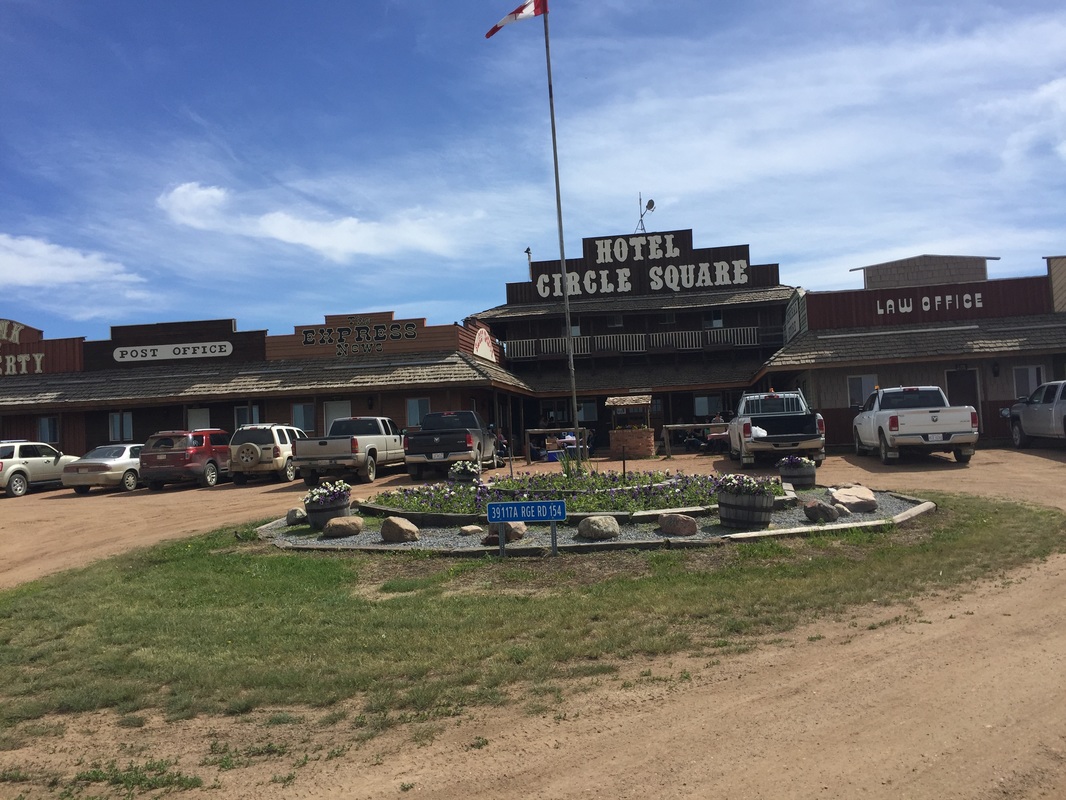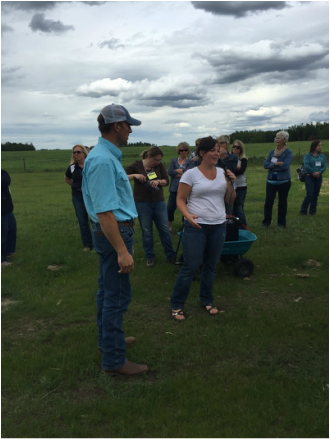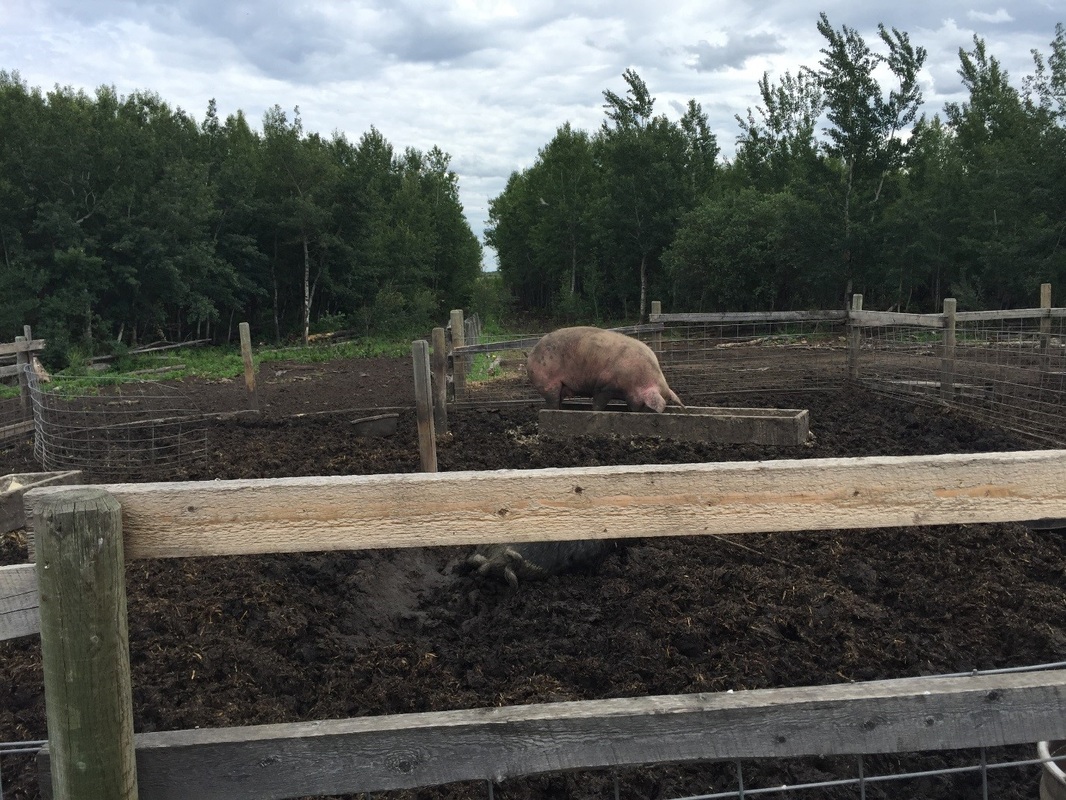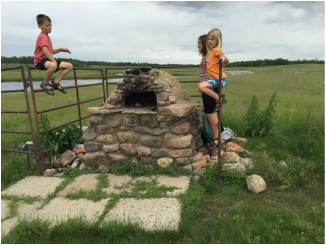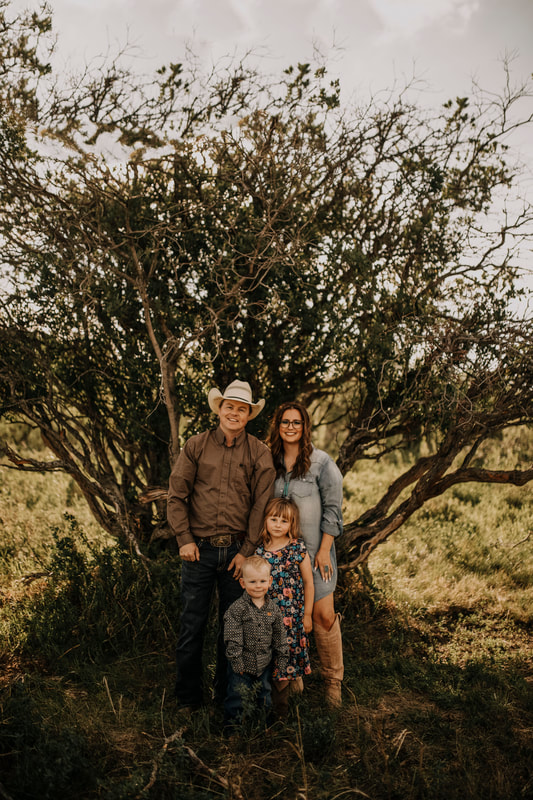|
Click to set custom HTM
Posted By: Jesse Williams
If you didn’t catch Part I of the two day Women’s Grazing School Review, click here.
While Part I focused on the on-site tour of Nature’s Green Acres, Part II will be an overview of the classroom portion of the event, which was jam packed with great information. Low Stress Cattle Handling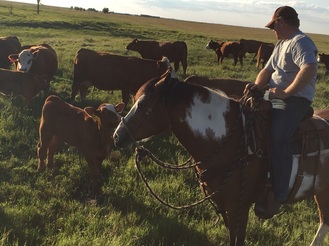
Dylan Biggs is a Special Areas rancher who has made a name for himself in low stress cattle handling, teaching the subject and working with ranchers across the industry to improve their methods. He believes that every step an animal takes should be voluntary and not relying on force or fear. When it comes to calving, branding, turning out bulls or weaning, Dylan Biggs believes there is a stress free way to handle your cattle. And I would have to agree.
I had seen Dylan speak about his techniques before this Grazing School, but a refresher course never hurts- no matter how long you’ve been in the game. While his methods aren’t anything out of the ordinary, he reminds us to use cattle psychology to make the right things easy and the wrong things difficult when handling cattle. I think every rancher would have to agree that sometimes emotions run high in the sorting pen or when that bull won’t cut from his herd, voices may raise, tears may fall and wives will storm off (come on ladies, you know it’s true!). Whether it’s Dylan Biggs or another herdsman of your choice, I encourage everyone to take a few minutes to refresh their low stress handling strategies and I challenge you to share those methods with someone else. Whether it’s your spouse, your neighbour or your kid, remind them where those blindspots are for a cow, or how to indirectly push from the sides, or maybe just to remember its ok to back up and give that cow some space! With so many consumers looking ever deeper into our operations, it never hurts to reinforce low stress livestock handling methods with your ranch hands. To learn more about Dylan Biggs and his cattle handling techniques you can visit his website at www.dylanbiggs.com or read more in this Grain News Article. Managing Forages from the Ground Up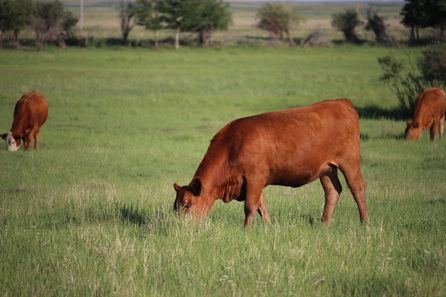
This was probably my favorite presentation from the whole event. Karin Lindquist, Forage-Beef Specialist with Alberta Agriculture, was an absolutely fabulous speaker. I think I enjoyed her presentation so much because of the immense passion that she spoke with- she truly is a “Range Nerd”, as she put it.
She stressed that the best way to manage our farms is from the ground up. Start by managing your soil first, as it influences what can be grown and how well. I think over the last few years our industry has been doing an amazing job encouraging producers to start thinking about their soil as their top asset. 2015 was deemed the International Year of Soils by the Food and Agriculture Organization of the United Nations and boy did our local research associations do a great job promoting it. (You can head over to http://www.chinookappliedresearch.ca to see what was and still is going on in my area!). Karin then reminded us that to manage your forage, you need to know what plants you have. This can be easier said than done if you don’t have an agriculture degree or a self-proclaimed Range Nerd nearby! However, Karin gave us some great resources to use to identify the plants in our pastures, and assess the health of our range: Alberta Range Plants & Their Classification Range & Pasture Management When Dealing with Drought Alberta Tame Pasture Scorecard Management of Canadian Prairie Rangeland Pasture Planner- A Guide for Developing your Grazing System HR on the Ranch
Abby Verstraete, Alberta Agriculture & Forestry’s Rural Business Specialist, was on hand to chat about the importance of Human Resource Management on the farm. This topic is all too often overlooked when it comes to employees on farms and ranches, maybe due to the seasonality or wide variance in positions. Country Guide recently interviewed Abby about attracting and retaining workers on the farm. You can read it by clicking here.
Overall, the two day Original Grazing School for Women was a fun, information filled event that I would recommend to others. With such a diverse group of ranching ladies from across the province and experts from across our industry, this event and others like it, are worth the time and investment in my opinion. After all, the best way to improve your operation is to ask questions, meet other ranchers and learn from their experiences!
0 Comments
I absolutely LOVE learning and I think there is so much to learn from visiting other people’s ranching operations. I find this is true no matter how many times you’ve visited or how good of friends you are. I literally learn something new every time I go to somebody’s branding, help move their cows, or even just go for an evening beer. This is why I am so excited to share with you what I learned at the Women’s Grazing School. I took lots of notes so this is basically a condensed version of the entire school… thus it’s being delivered in two parts!
A few weeks ago I was lucky enough to attend The Original Grazing School for Women hosted at the Circle Square Ranch near Halkirk, AB. Over 50 ladies from all over Alberta gathered to be part of this annual educational event aimed at sharing livestock grazing practices to increase production, return on investment and biodiversity on the ranch. This was my first grazing school and if anyone is interested, there is another one happening called The Southern Alberta Grazing School for Women this July 27-28 in Elkwater, AB!
Day one brought us to two different ranching operations near Killam, AB. The first stop was at Nature’s Green Acres, owned and operated by Danny and Shannon Ruzicka. Their farm raises grassfed beef and pork that they direct market to consumers and in particular, the Rge Rd Restaurant in Edmonton, AB. Danny, Shannon and their kids were very gracious to let us tour their farm and gave us some insight into their rotational grazing strategies.
Rotational Grazing Cattle
Because they restricted direct access to the creek, they needed to provide a new watering source for their cattle. They decided to create a wet well off the creek, installing a Nose Pump with two watering bowls that will suit up to 100 head of cows. While they raved about their nose pumps I am a bit more skeptical, based on our own recent experiences.
Now I am a numbers girl so the burning question I had was what their increased grazing days or production was. Shannon explained that they hadn’t really monitored the before/after as that was just one more thing that would have stopped them from finally getting their rotational grazing system up and running. I can’t blame her, but I fully intend to monitor the difference in our cow days/acre once we get ours fenced! Hopefully we can share this information with you next year!
Bush Raised Pigs
Danny and Shannon also shared with us their “bush raised” pigs. Of course the first thing I asked was What is a bush raised pig!? Simply put, they are pigs that are raised outside in rotational grazing paddocks that have heavy tree/bush cover, versus the traditional corralled or indoor conventional methods. Now I must give my kudos to the Ruzicka’s, here. I think this is a genius marketing strategy- they sound different, natural, and leave me wanting to know more! While I don’t think I will be able to provide bush raised animals on my flat, treeless prairie landscape, maybe I will have to try prairie raised pigs!
The farrowing sows, sows with piglets and weanling pigs were all separated into different paddocks. Each paddock had significant tree/brush cover that allow the pigs protection from the elements. The pigs graze the grass growing between trees, root up the soil and help break down the deadfall. When asked if the pigs harm the healthy trees, Shannon shared that it does take some management to ensure the pigs are moved from paddock to paddock before they overgraze and begin damaging healthy trees.
The Ruzicka’s shared with us that the breed of pig is very important to rotational grazing. Because the pigs are outside year round, it is essential that they use heritage breeds. These breeds are more adaptable to harsh weather and have thicker hides and longer hair for cooling/heating. Pigs that are raised in indoor facilities would not be suitable for their situation. They did say that you should check with your slaughter facility prior to purchasing heritage breeds as the thick hide is often a source of contention during butchering.
They don’t seem to have issues with predators, but one excellent question posed by a participant was “Will they decrease gopher populations?”. It is a very intriguing question as they may destroy the gopher tunnels through rooting and perhaps they could even eat them? If anyone has any experience I would love to hear about it!
Unique Dining Experience
Day one of the Women’s Grazing School was definitely worth it for me. I came away with great ideas, some what-to-do's and some what-not-to-do’s, and enjoyed visiting with participants from around the province. If you are interested in other grazing schools for women, visit the Grazing School for Women Facebook page or contact your local Ag Fieldman.
|
A Blog About Our Life, Love & Lessons Learned on the Ranch
Categories
All
in the mediaArchives
February 2024
|
